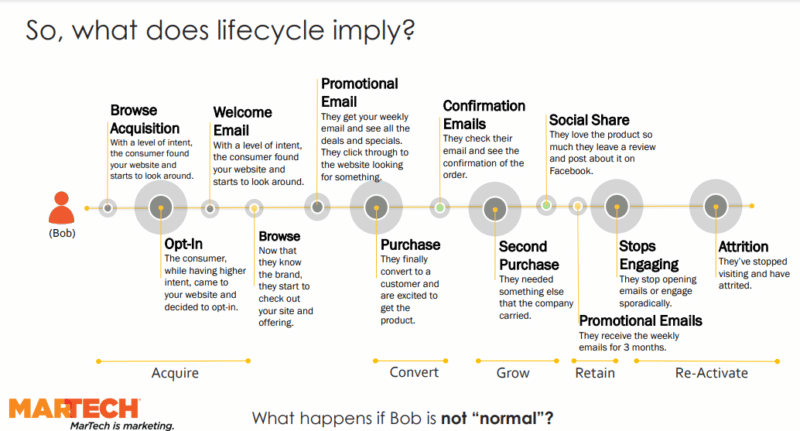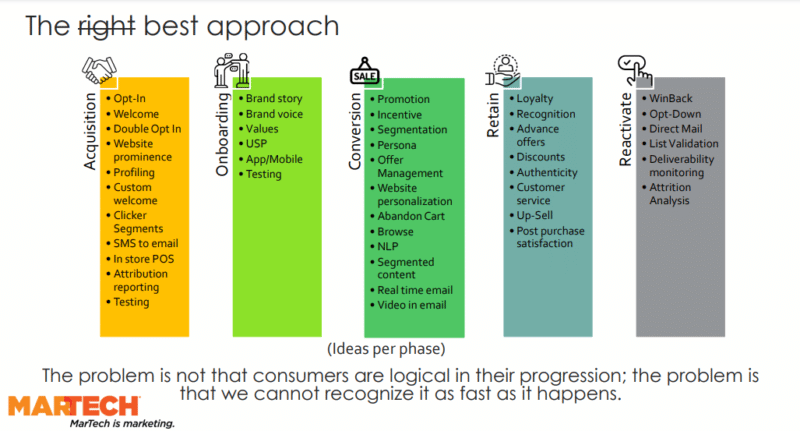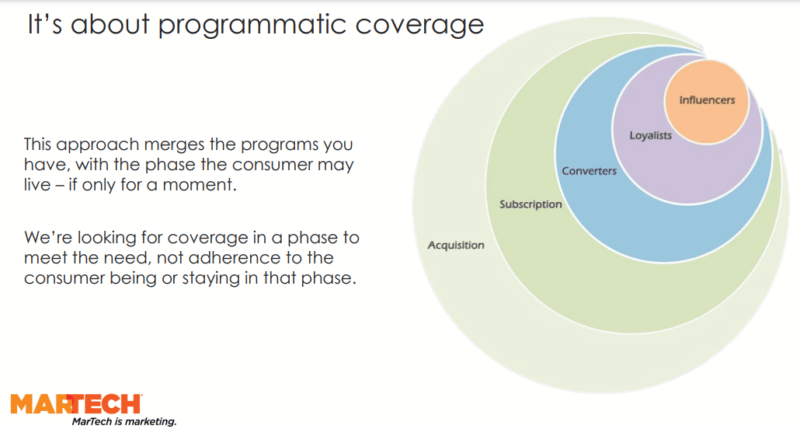How to drive email innovation with programmatic coverage

“The consumer is something we’re trying to figure out,” said Ryan Phelan, managing director of RPE Origin, in his presentation at The MarTech Conference. “They consume everything that we do. The email marketer is sending out promotional campaigns, triggered campaigns –all kinds of different things to get a conversion.”
“Whether you’re on the B2B side or the B2C side, what you experience in email is trying to get that consumer to do what you want them to do,” he added.
Encouraging customers to opt into your email marketing programs isn’t a straightforward process — it’s a conglomeration of numerous touchpoints that marketers need to grasp if they hope to engage with these groups. But, to keep track of so many points of contact, marketers would be wise to take a programmatic approach.
Here’s how Phelan recommends email marketers implement programmatic coverage to secure customer buy-in.
Understand the changes to the email lifecycle
“The ’email lifecycle’ … is an archaic term, something that we need to think differently about,” said Phelan.
He then described his experience working for Responsys (now part of Oracle) back in 2006. During this period, he and other marketers talked about email using the lifecycle framework –how the consumer started and ended in predictable places. This was because marketers were responsible for teaching customers to use the internet during this period — how to shop online, how to get an email, how to sign up for email, what newsletters were, and what websites were.
However, in today’s digital-first culture, customers use the internet in a multitude of ways. The standard customer email lifecycle mentality no longer makes sense.
“This [lifecycle] approach of acquiring a customer, converting, growing, retaining, and reactivating them is very linear,” said Phelan. “I don’t think that represents consumers today.”
No two customers interact with campaigns the same way. There’s no longer “one type” of customer — if there ever was.

Email marketers need to move away from this linear “lifecycle” model and focus on understanding the customer’s journey, using their unique touchpoints as signposts.
Explore capabilities from vendors like Adobe, Pointillist, SharpSpring, Salesforce and more in the full MarTech Intelligence Report on customer journey analytics platforms.
Take an inventory of touchpoints and segments
“I think marketers need to take an inventory to ensure that they have good coverage across the touchpoints and segments,” Phelan said. “Do you have coverage? Do you have programs that address the transitory nature of a consumer?”
Phelan asks marketers to consider five different phases of the email marketing program: acquisition, onboarding, conversion, retain, and reactivate. Unlike the lifecycle framework, these phases are nonlinear, so customers can find themselves in any segment at any time. Marketers can employ automation tools to keep track of these touchpoints.

“My job as an email marketer is to make sure that when I hit criteria when I pass a threshold of engagement, there’s a message there to meet that moment,” said Phelan.
“Look at these five different phases and make sure that you have coverage in terms of marketing automation or ways to recognize peoples’ presence in that phase,” he added.
Everything you need to know about email marketing deliverability that your customers want and that inboxes won’t block. Get MarTech’s Email Marketing Periodic Table.
Recognizing which phase the customer is in is vital to marketing effectively, said Phelan.
He added, “These are the major places where people visit, even for a moment. Think about audience size and the transitory nature [of customers] — think about acquisition, subscription, conversion, loyalty and influence.”

Phelan believes the goal of this programmatic approach is to map out each customer touchpoint and email marketing program available to you, enabling teams to select which programs they enact based on the audience. The mapping process is designed not only to understand your coverage but to help enact new programs over time, connecting with customers at every touchpoint.

“It’s not about a lifecycle, and it’s not about a linear path,” said Phelan. “It’s about having the programs in each of these key areas to talk to your consumers.”
